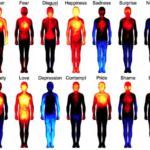As a continuing feature of our work here at the blog, we hope to be able to offer glimpses into what is going on in the world of health and wellness news that affects you and your family on a monthly basis. For the past few months we’ve focused on seasonal issues, especially as we all began to spend more time outside in the warmer weather.
Now that fall is nearly upon us, which includes the back-to-school rush, much of what we discuss will move indoors.
But first…
Most Football-related Head Injuries Take Place During Practice: Several youth football drills expose young athletes to head impacts more frequently and more roughly than others, according to a U.S. study that followed 10- and 11-year-old players for a full season. “The majority of the head impacts an athlete receives are from practice,” said senior author Jillian Urban of the Wake Forest School of Medicine in Winston-Salem, North Carolina. Modifying and eliminating certain high-intensity drills could reduce head hits, concussions and injuries at both the youth and professional levels of football, the study authors write in the Journal of Neurosurgery: Pediatrics.
Fat necrosis: Causes and treatment: When a breast lump is not a major concern. Areas of fat necrosis can feel like small, hard tumors but they are not cancerous tissue. Although fat necrosis is non-cancerous, the appearance of fat necrosis can resemble a cancerous lesion. Fat necrosis can cause a person to have round, firm lumps of tissue on the body. The presence of fat necrosis does not necessarily require treatment. According to the American Cancer Society, areas of fat necrosis in the breast do not increase a woman’s risk of breast cancer. However, fat necrosis areas in the breast can closely resemble breast cancer tumors, and they can cause changes to the breast that are similar to cancer-related inflammation.
Depression: Is brain inflammation tied to suicidal thoughts? A new study confirms the link between inflammation of the brain and the prevalence of suicidal thoughts in people diagnosed with major depression. This is the first study of its kind to measure relevant biomarkers in living individuals. Major depression is a very common mental condition, with 6.7 percent of all adults in the United States having had at least one severe depressive episode in 2014 or 2015. According to the World Health Organization (WHO), depression is also currently the leading cause of years spent with disability worldwide.
Resistance exercise linked to reduced anxiety: People who do resistance exercises like weight lifting may experience less anxiety than people who don’t workout, a research review suggests. “The positive effects of exercise training on mental health are well established; however, the majority of this knowledge is based on studies involving aerobic based training,” said lead study author Brett Gordon, a physical education and sports researcher at the University of Limerick in Ireland. RET (resistance exercise training) significantly reduced anxiety in both healthy participants and those with a physical or mental illness, and the effect size of these reductions is comparable to that of frontline treatments such as medication and psychotherapy.”
Stay tuned for more important snapshots of such timely information and health headlines in future posts, when it’s available and has value to our readers.



